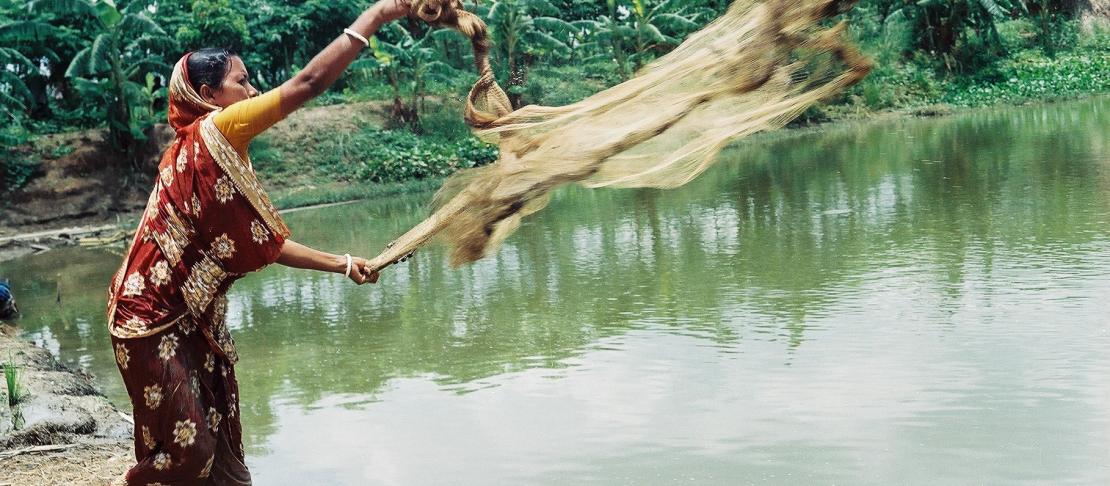Impacts of climate change on fisheries and women in Bangladesh

by Melody Braun, WorldFish Center, Bangladesh
The Bengali proverb “mache-bhatee Bengali” (rice and fish make a Bengali) well illustrates the important role played by fish and fisheries in food security in Bangladesh. Fish represent 58 percent of total animal protein consumption and are a key source of vitamins and nutrients. Because of women’s lower social status, religious-cultural norms and values, restricted mobility and heavy responsibilities at household, women are considered to be less directly involved than men in fisheries activities. But in reality women are heavily involved in fish production systems: feed preparation, fertilization of ponds and feeding fish and shrimp as well as post-harvest activities are often their responsibility.
Water resources are key to fisheries, particularly aquaculture systems where investments are made to improve productivity and income. The increasing irregularity and unpredictability of rain results in seasonal variability of water flows in rivers and other water bodies, worsens siltation of riverbeds and increases seasonal salinization of water and soil in Bangladesh, particularly in the south. The increasing frequency of severe weather events, such as cyclones and floods is causing high losses in aquaculture systems with corresponding severe impacts on household livelihoods.
Since post-harvest activities provide a direct range of livelihood opportunities to poorer women that might disappear if fish production decrease, their access to both money and food is restricted. With their limited access and control over resources (knowledge, cash and tools), women, especially female-headed families, have only limited capacity to cope and adopt alternative climate-resilient food and income-generating activities. Indirectly, a decrease of fish production leads to a decrease of the essential vitamins and minerals in the diet of women, who tend to give food priority to their husband and children.
To address these climate-related challenges, WorldFish Center Bangladesh and partners are exploring viable gender-differentiated strategies to enhance the resilience, productivity and diversity of aquaculture systems in weather and water challenged contexts. Among these, the CGIAR Challenge Programme on Water and Food projects (in partnership with the International Water Management Institute (IWMI), the International Rice Research Institute (IRRI) and the Institute of Water Modeling) are implementing research on water management in polders and on fish production systems in southern Bangladesh. The Cereal System Initiative South Asia (CSISA) and the Aquaculture for Income and Nutrition (AIN) projects are focused on diversified and integrated aquaculture systems. And the CGIAR research programs on Climate Change, Agriculture and Food Security (CCAFS) and Aquatic Agricultural Systems (AAS) are looking at strategies to recreate fish roads and improve fish circulation in rice fields, water management groups in communities, homestead pond management with women, in parallel to integrated farming systems including homestead vertical agriculture systems, drip irrigation and rainwater harvesting systems.
More information
Read more about Climate Change, Agriculture and Food Security work in South Asia.
This blog post was written by Melody Braun, WorldFish Center, Bangladesh.


